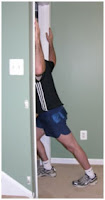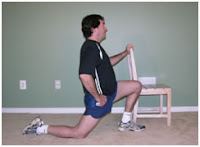 Back pain is part of the human condition… sooner or later you’re going to get it.And if you’ve ever taken over-the-counter painkillers, beware. They can do far more harm than good.Regular use of aspirin, Advil, Aleve, or Tylenol can lead to:
Back pain is part of the human condition… sooner or later you’re going to get it.And if you’ve ever taken over-the-counter painkillers, beware. They can do far more harm than good.Regular use of aspirin, Advil, Aleve, or Tylenol can lead to:Gastrointestinal bleeding
Liver damage
Increased risk of cardiovascular disease
Liver damage
Increased risk of cardiovascular disease
In fact, just last year the FDA made some serious changes to make consumers aware of the dangers these drugs pose. They now require each of these drugs to come with a clear warning that explains the potential side effects.The good news is you can ditch the painkillers. I’ve got a simple technique that’ll rid you of back pain in as little as two minutes a day.1
First it’s important to understand why you get that back pain in the first place…Tendons attach your muscles to your bones. Ligaments attach bones to bones. As you get older, your flexibility decreases. Plus, your posture and how you sit and stand contribute. Certain muscles shorten, and your joints lose their range of motion – meaning your ligaments get weaker. This can trigger a number of back problems.
Healthy stretching works by lengthening those ligaments and strengthening your tendons. Problem is most average stretching exercises put stress on your ligature. Not exactly helpful.The key factor that most folks don’t know – including a lot of yoga teachers and personal trainers – is that you don’t want loose joints. The tighter they are, the more stable and stronger they are. The stronger they are, the less likely you are to sustain an injury in the first place.So what you want are long and relaxed muscles that can lengthen on demand without resistance.
I’ve found an easy way to do this. As long as you follow these techniques closely, they’ll ease your back pain instead of making it worse (like a lot of wrongheaded stretches).The two parts of your body you want to stretch daily to avoid back pain are the front of your shoulders and the front of your hips.
Shoulder Stretch: You need to stretch and develop these muscles, because they are very susceptible to injury. And tight shoulder muscles contribute to back and neck pain, especially if your head and shoulders droop forward.
because they are very susceptible to injury. And tight shoulder muscles contribute to back and neck pain, especially if your head and shoulders droop forward.
 because they are very susceptible to injury. And tight shoulder muscles contribute to back and neck pain, especially if your head and shoulders droop forward.
because they are very susceptible to injury. And tight shoulder muscles contribute to back and neck pain, especially if your head and shoulders droop forward.How to Perform This Stretch: Stand in an open doorway. Raising your arm to a 90-degree angle with palm facing out, press your hand and shoulder against the wall and doorjamb. You should feel the wall against your armpit. Slowly increase the tension as you push forward. Hold for a 10 count. Then repeat with the other arm.
Hip Flexors: You need to do this stretch, particularly if you sit all day at work. Sitting all day tightens and shortens the hip flexor muscles. This is a major cause of lower back pain, as it pulls the pelvis downward in the front and creates an excessive curvature in the lower spine. Stretching your hip flexor muscles daily will prevent this kind of lower back pain.
all day at work. Sitting all day tightens and shortens the hip flexor muscles. This is a major cause of lower back pain, as it pulls the pelvis downward in the front and creates an excessive curvature in the lower spine. Stretching your hip flexor muscles daily will prevent this kind of lower back pain.
 all day at work. Sitting all day tightens and shortens the hip flexor muscles. This is a major cause of lower back pain, as it pulls the pelvis downward in the front and creates an excessive curvature in the lower spine. Stretching your hip flexor muscles daily will prevent this kind of lower back pain.
all day at work. Sitting all day tightens and shortens the hip flexor muscles. This is a major cause of lower back pain, as it pulls the pelvis downward in the front and creates an excessive curvature in the lower spine. Stretching your hip flexor muscles daily will prevent this kind of lower back pain.How to Perform This Stretch: Stand in a modified runner stance, with right foot forward and left foot back, feet flat on floor. Put your hands on your hips (or put one hand on a chair for support) and keep your back and hips in straight alignment. Push forward with your hips, while maintaining your erect posture. Slowly, push your hips forward only until you feel a comfortable level of tension. Hold for a 10 count. Switch sides by reversing your leg stance and repeat
Give these a try. They work for me. Do them every day. Consistency’s the key.
Give these a try. They work for me. Do them every day. Consistency’s the key.
One more thing: I also recommend you check out the Healthy Back Institute’s “Lose the Back Pain” program. Over 50,000 people have used their proven system to get relief. If you’re suffering from any sort of back pain or sciatica, you really need to click here and check it out.
To Your Good Health,
Al Sears, MD
11903 Southern Blvd.,
Ste. 208Royal Palm Beach, FL 33411
1 Deyo et al. “Cost, controversy, crisis: low back pain and the health of the public.” Annual Review of Public Health. 1991. 12:141-56.
No comments:
Post a Comment